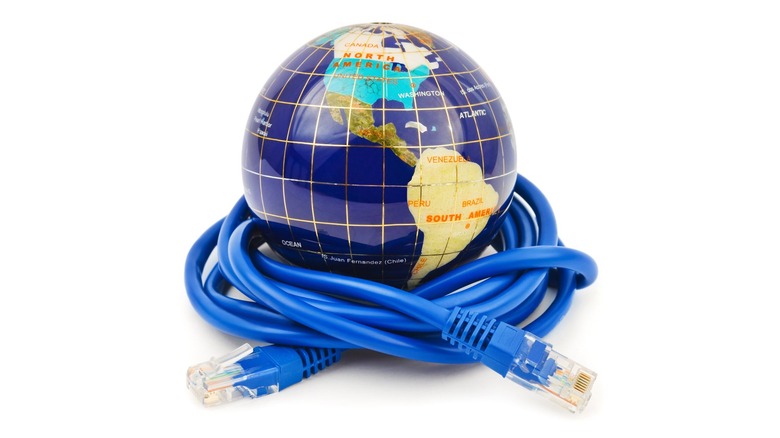The Surprising Country With Greater Internet Accessibility Than The United States
Even though media reports have often reported the deep digital divide plaguing the United States, data seems to indicate that the country isn't doing too badly compared to the rest of the world.
UK-based publication BroadbandChoices conducts a yearly study that ranks countries worldwide in terms of the quality, availability, and cost of internet access. In the 2022 edition of the report, the U.S. has managed to garner the second position among 164 countries. A commendable achievement, indeed, given that the U.S. has improved its position from 2021 by beating another European country — Liechtenstein.
But what about the country that has even better internet accessibility than the U.S.? This nation has consistently managed to beat the U.S. in Broadband Choices' rankings for several years now. So how do they manage to do it? And could the U.S. take cues from this country to further bridge the digital divide?
In case you haven't guessed already, the country we are referring to here is Denmark!
What does Denmark do better?
Several things, in fact. The average Dane has a much better internet experience across the board than the USA because of much faster average download speeds while also paying quite a bit less than the average U.S. citizen.
While average internet speeds in the U.S. hover just below 30 Mbps, most Danish people surf the web at an average speed of nearly 70 Mbps. The average U.S. citizen shells out almost $62 a month for broadband access — while the average Dane pays a much lesser amount of $47.8 for a much better internet experience.
What makes Denmark's achievement more interesting is that the country has managed to achieve this despite having very little competition in the broadband space. The broadband sector in Denmark is dominated by a single player, YouSee, which is known for its high-quality, affordable plans. Another factor that positively impacts Denmark's internet accessibility score is that most of its citizens speak English as a second language.
Size matters
There is no doubt that Denmark is a veritable Utopia for the folks who love fast, cheap internet. But is the U.S. really doing that badly?
While Denmark's scores look good compared to the U.S., what is important to note that the U.S. is a massive, massive country spanning multiple time zones and geographies with a population of over 350 million. The Biden administration has also promised a new infrastructure plan that promises 100% broadband coverage in the U.S. within the next decade. On the other hand, Denmark only has around 5.8 million people and is smaller in size than most U.S. states.
It would, perhaps, make more sense to compare the U.S. with countries like China and Canada that are at least similar in size — both of which are several notches below the U.S in terms of internet accessibility. For example, the average internet speed in Canada – as per this study – is just 20.4 Mbps, while citizens there pay $67 a month for broadband. China's stats look even grimmer with an average speed of just 4.9 Mbps, which is even lower than India's, a nation with nearly the same population.
African nations continue to languish at the bottom of the table, with countries like Ethiopia, Equatorial Guinea, and Mauritania offering the worst value for money when it comes to accessing the internet.


